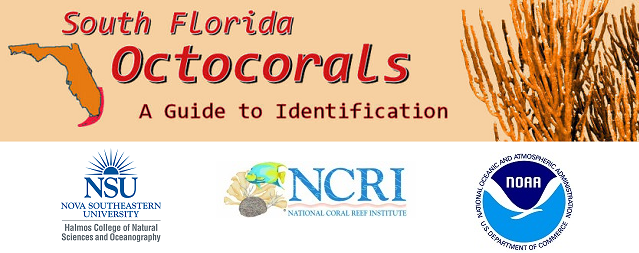Preview

Family
Plexauridae
Common Name(s)
Wagenaar's false Plexaura
Colony Form
Small, dichotomously branched, bushy or monoplanar, tall.
Axis
Cylindrical
Branches
Few, long, thin, tapering, with tips 3-4 mm in diameter.
Apertures
Small, smooth, round to slightly oval, with lower rim sometimes slightly raised; ~ 0.5-1.0 mm across; crowded, but may be separated by more or less than their own diameters. No projecting calices.
Mucus
Slimy
Color
Beige to purple with chestnut brown to dark brown polyps. Dries gray to brown. In alcohol white, gray, or brown.
Sclerites
Polyp armature: few flat small rods. Axial layer: purple capstans, becoming complicated dark purple spheroids when fully developed, and purple spindles, sometimes branched. Outer layer: abundant clubs with thick, spheroidal heads, sometimes with 3 or more leaves or flanges, to >0.2 mm long; many colorless, often complex, capstans, and both white and purple small stout spindles with crowded complicated tubercles (usually 0.2-0.4 mm).
Habitat
Shallow reefs 0-30 m.
Distribution
South Florida, Bermuda, Caribbean Sea.
Similar Species
Pseudoplexaura flagellosa ; Pseudoplexaura porosa; Pseudoplexaura crucis; Plexaurella grisea; Eunicea knighti
Date Taken
4-11-2016



Notes
Similar to P. flagellosa, but distinguished by shorter growth form and fewer branches (Keith, 1992). Flamingo tongue gastropods, Cyphoma spp., are common predators (Harvell & Suchanek, 1987).